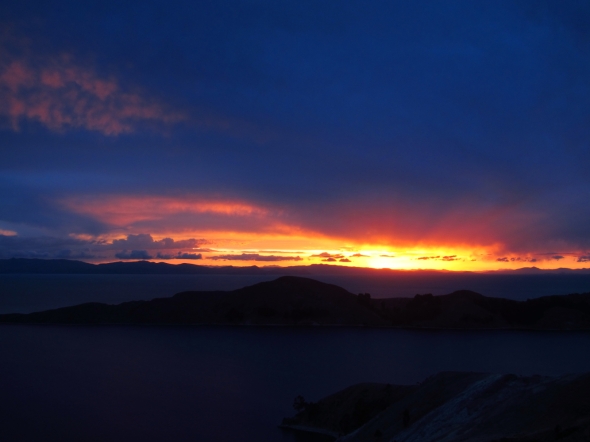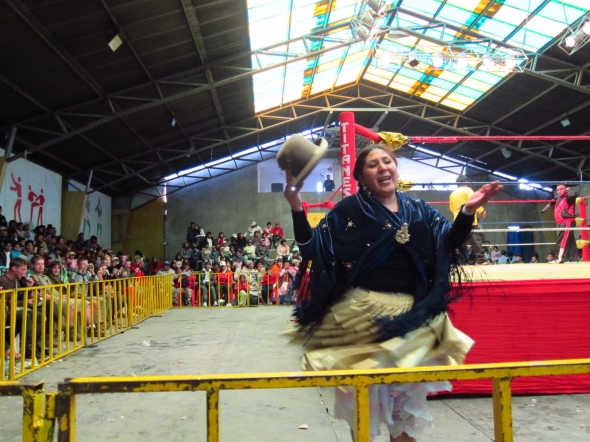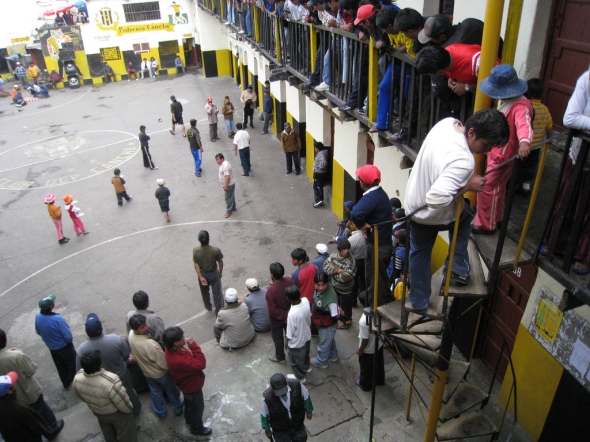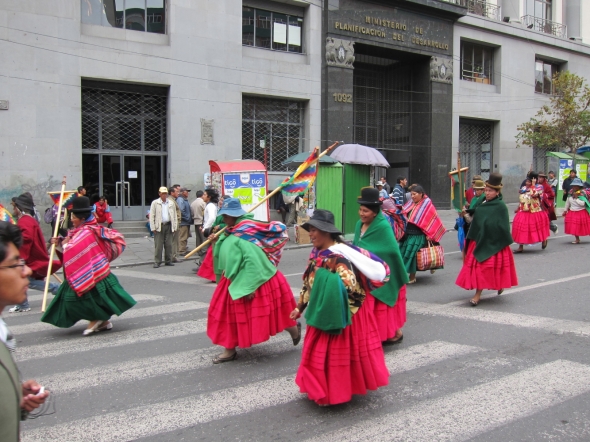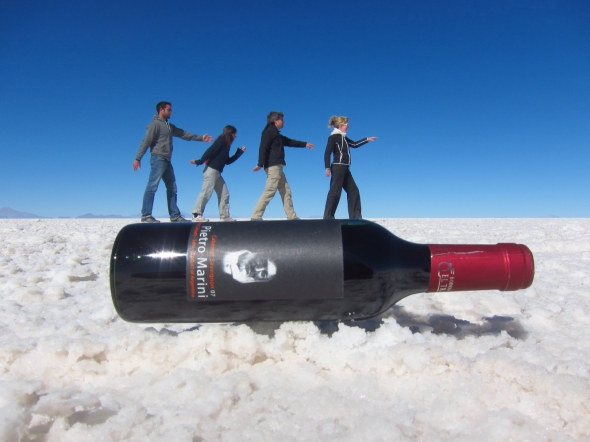Lago Titicaca

Lake Titicaca, South America’s biggest lake and the world’s highest. We decided the best way to see the lake was to stay on one of its islands with a local family. Im not sure where else in the world you can get a double room for £2/night. Mind you, you don’t get running water or heating and you have to bring your own loo roll. We took a boat from Copacabana to the ‘Isla Del Sol’, which takes nearly 1hr 30 by a painfully slow boat. When you arrive and climb the steep hike up the ancient Incan stairway, you are rewarded with some of the most spectacular views of the lake. Although there is very little to do on the island, the views make it well worth the visit, as well as several inca ruins and long island walks, which, at 3800m were no walk in the park. Lake Titicaca sits on the border between Bolivia and Peru, so it was our last destination in Bolivia as we moved in to Peru…
Cholita Wrestling

We couldn’t resist the temptation of ‘Cholita wrestling’, where we were told we could see traditional Cholita women fighting. The wrestling was truly tacky but brilliantly entertaining. Front row seats were a bonus as the wrestlers interacted with the crowd (throwing apponents on the audience), and audience participation (throwing things back… anything you liked) was encouraged.
San Pedro Prison

We had heard much speculation about the possiblity of ‘tours’ around one of South Americas most notorious prisons. Ask any locals and they will tell you that you can no longer gain entry into the prison, but on arrival at the hostal in La Paz, we met a couple who heard tours were still possible on the weekends so long as you bribed the guards. We were in luck…it was a Saturday! Although the whole process sounded a little dodgy, accounts of the prison were incredible, so we headed in the direction of San Pedro square where sure enough we were appraoched by a guard asking us if we wanted to enter. One by one we slipped pasted the entrance and handed over our ‘bribe’…we were in! Our tour guide/inmate Mike took us through most of the prison sections. Rest assured we had guards with us at all times, although later found out these guards were inmates with life sentences… great. The whole prison (male only) is corrupt and run by money. Those with lots of money can have a large cell with TV, kitchen and bathroom while other with little money can barely last the night. Wives and children live there as a family as life in the prison is considered better than outside as this is normally all they can afford. There are also restaurants, gyms and saunas in the ‘luxury’ sections of the prison. Asking Mike what he did to get inside he replied ‘I killed someone’. Hmmm wasn’t sure what response one gives to that, especially when he reveals a large stab wound under his t-shirt from a fight he was in a month ago. Mike introduced us to his wife and told us she was pregnant and he hoped to be out the prison within a year. Not sure if he was high on something or getting too much money from tourists to bribe a judge but we didnt have the heart to question this assumption. We were just glad that after our 2hr tour we were able to slip out the gates and leave the most bizaare prison on earth behind us.
Needless to say we weren’t allowed a camera inside the prison, so we only have a postage stamp as a souvenier and some pics from the web…
La Paz

La Paz was one of the most intense cities we’ve visited; a manic 24 hour city, which is loud, dangerous, smoggy and busy. At 3660m, you certainly feel the altitude as well as everything La Paz throws at you. Set high in an Andean valley, the main street (El Prado) runs through the centre, with the city growing up the mountains on either side. This makes navigating quite simple as wherever you are, you simply walk down hill to El Prado and find your bearings. Walking also makes a lot of sense as the roads seem to be constantly blocked with traffic (one 10 minute taxi drive took us literally 5 metres round the corner before we gave up!), however the steep incline of the streets can make going anywhere impossible on a hangover! Protests, apparently, are a daily occurance and cause complete chaos by closing one half of ‘El Prado’. The city’s architecture is mostly dull, decaying and dusty, but is contrasted by colourful people (particularly the traditional ‘cholita’ women) and numerous markets. The Withches Market was particularly worth visiting to see the Llama foetuses and other oddities on sale for use in ceremonies. La Paz is known as a bit of a party town, so we took the opportunity to take in some nightlife with other travellers.
Salar de Uyuni pt. 2

More stunning scenery on day 3 (and a slightly tired and grumpy Sophie). We were able to get really close to the flamingo´s on one of the beautiful lagoons as well as Vicuña, Llama and Alpaca. Reaching the edge of the Salar De Uyuni by dark we spent the night in a Salt ´hotel´. Everything from walls, flooring, tables, chairs and beds were made from salt (good for Sophie´s ulcers) and we even had our first shower. Tonight it was Sophie that cut the village power by attempting to plug in a hairdryer (genuinely!).
Our final day started at 4am (IN THE DARK) to make our way to the middle of the salt flats for sunrise… a one-off experience well worth the effort. Its hard to describe the scale of the salt flats at over 11,000sq/km and to believe that under the hard salt crust (1m-20m thick) lies vast amounts of water. We visited one of the 14 islands in the salt flats which is home to some acient cactus and provided stunning views. Breakfast must be mentioned here….freshly baked bread and pancakes from our fabulous cook who had clearly been up earlier than us that morning.
Given some of the stories we had heard about bad tour companies we were so lucky to have a great guide, cook and fellow travellers…
Salar de Uyuni pt.1

The largest salt flats in the world at 3650m above sea level. We arrived in Tupiza just in time to book ourselves onto a tour for the following day. By chance we teamed up with another couple who were really lovely from Holland which was lucky as we were spendng the next 4 days and 3 nights sharing bedrooms and a cramped 4×4 with them! Both Santos our tour guide and Janet (our cook) only spoke Spanish so we were once again maxing the phase book.
Day 1 we headed into the mountains reaching 4200m. We passed several remote villages (how do they get their post!) finally arriving in San Antonio De Lipez (4260m) to spend the night. The food was fantastic and with coco leaves, vino and backgammon all was going well… until we discovered we nearly hit the floor on the seriously old matress and Chris caused a village power cut trying to charge his camera!
Day 2 and we were feeling the altitude with banging headaches among the group. Today was our favourite with inca ruins, old mining villages, first sightings of flamingos (love love love), colourful lagoons, desert landscapes and hot springs (bliss). The Laguna Verde although looked inviting with its colour was actually given its colour by the high arsenic content (so swimming was off the agenda). At over 5000m the freezing temperatures set in for the evening (as well as Sophie´s night-long headache). When the power was suddenly cut at 8pm we were forced to bed early.
Potosi & The Silver Mines

Potosi is a fascinating city. At 4100m above sea level it is the highest city in the world and has an incredible if not tragic past. The only reason for Potosi existing as a city was the 1545 discovery of silver in the Cerro Rico mountains and the consequent ´silver rush´ led by the Spanish. The population of Potosi grew from nothing to 160,000 within 50 years as the Spanish extracted the silver. Conditions for the slaves in the mines were quite terrible, with an estimated 9 million fatalities over 300 years of mining. A local told us that if you took the bones from all the bodies in the mine, you could build a bridge from Potosi to Spain. They also say you could build a similar bridge with the silver that has been taken over the years.
Today, Potosi still has remenants of the silver rush with some amazing colonial architecture. The mine still operates in a similar way to its past although silver is far less available and other minerals such a zinc and lead are also extracted. We were able to visit the mines with a former miner who showed us the whole mining process. On route we stopped at the miners market to buy them gifts as it is not an “official” tours and we must respect this is still a place of work for the miners. We were stunned to find dynamites available for 50p on the same shelf as a bottle of coke. There is also 96% alcohol on offer which Chris took up the offer of trying (probably to calm his nerves pre entering the mines). We asked if there are any age restrictions for buying both alcohol and dynamites but apparently none exisit!!!! Armed with said goods we headed for the mines, kitted head to toe in the full uniform (Chris looking like Bob the Builder and Sophie swamped with the overalls). Heading into the mines was nerve-wracking with only light from our head torches and the hot air filled with heavy dust. Even without suffering from claustraphobia it was impossible not to feel the pressue of being so deep underground. We crawled through tight tunnels and dodged the rickety mine carts amazed to see how old fashioned things still are. We spoke to different miners at work, all with cheeks full of coco leaves and ages varying from 16-60! After 2hrs spent in the mines we were happy to see daylight at the end of the tunnel!
